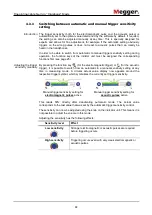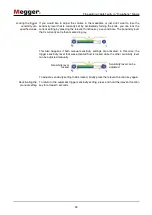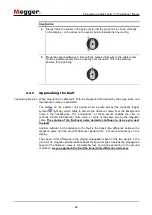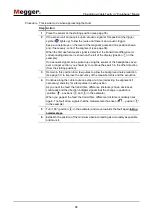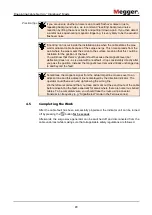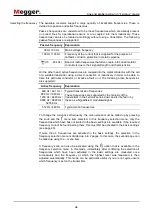
Line and probe location in “Ferrolux” mode
46
The available receivers support a large quantity of localizable frequencies. These is
divided into passive and active frequencies.
Passive frequencies are understood to be those frequencies which are already present
on buried lines for operational reasons or are coupled into them inductively. These
frequencies can also be located accordingly without using a transmitter. The following
passive frequencies are supported:
Passive frequency Explanation
50 Hz / 60 Hz
Mains voltage frequency
100 Hz / 120 Hz
Frequency of the current that is supplied for the purpose of
cathodic corrosion protection in metallic pipeline.
(15 … 23 kHz) Band of radio frequencies that often couple into buried metallic
conductors due to their signal strength and characteristics
On the other hand, active frequencies are coupled into the metal conductor with the aid
of a suitable transmitter using a direct connection or inductively in order to be able to
trace this particular conductor or localize a fault on it. The following active frequencies
are supported:
Active frequency Explanation
480 Hz / 491 Hz /
982 Hz / 1090 Hz /
1450 Hz / 8440 Hz /
9800 Hz / 9820 Hz /
32768 Hz
Typical transmission frequencies
These frequencies are supported by the majority of the
transmitters in the Ferrolux series, and can also be fed in by
these as a SignalSelect modulated signal.
512 Hz / 640 Hz
Typical probe frequencies
To change the currently set frequency, the menu screen must be called up by pressing
the knob and the menu item selected. In this frequency selection menu, only the
frequencies which have been activated in the basic settings are available. If the required
frequency cannot be found among them, this must first be activated in the basic settings
(see page 43).
If more than 6 frequencies are activated in the basic settings, the selection in the
frequency selection menu is divided up into 2 pages. In this case, the second page can
be called up using the
...
menu item.
A frequency scan can also be activated using the option that is available in the
frequency selection menu. In this mode, immediately after confirming the selection all
frequencies which have been activated in the basic settings are measured once
successively and the frequency at which the highest level was measured is then
adjusted automatically. This mode can be particular useful if you are not quite unsure
which frequency is set on the transmitter.
Selecting the frequency
Summary of Contents for digiPHONE+2
Page 2: ...2 ...


